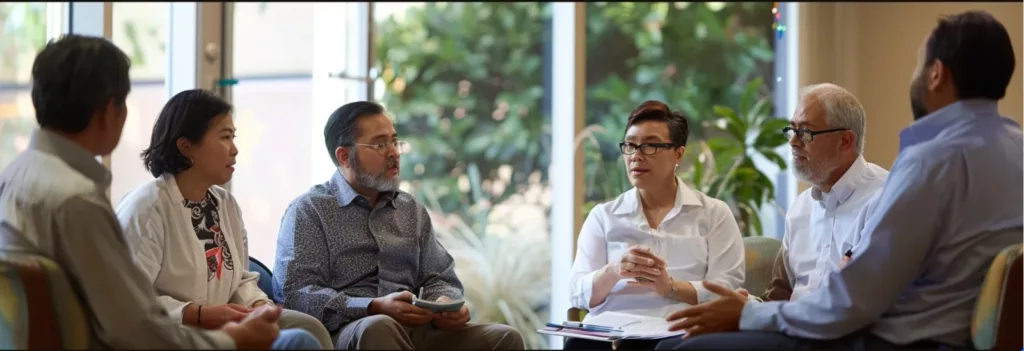
Integrated dual-diagnosis treatment programs offer a revolutionary approach to addressing the complexities of addiction recovery. By acknowledging the interconnection between substance use disorders and mental health conditions, these programs deliver comprehensive care that tackles both issues simultaneously. Understanding the intricacy of these treatments is critical for those seeking a path to sustainable recovery. Here, we delve into the core benefits of integrated treatment modalities that cater to the dual-diagnosis population. Keep reading to learn how these programs are transforming lives by offering more than just addiction treatment.
Understanding integrated dual diagnosis treatment in addiction recovery
Integrated dual diagnosis treatment represents a significant evolution in addiction therapy, recognizing that many individuals struggling with addiction also contend with mental health challenges. This co-occurrence of disorders can be a complex web, where one condition exacerbates the other. Traditional treatment models, which address either addiction or mental health in isolation, often miss the intricacy of dual diagnosis cases.
Approaching recovery with an integrated mindset involves a synchronized strategy that confronts both addiction and mental health issues head-on. Recognizing that symptoms of mental illness, such as anxiety or depression, can fuel substance abuse, and vice versa, is crucial for effective treatment. This bilateral approach promotes a deeper healing process and acknowledges the nuances of the human psyche.
Treatment specialists at a dual diagnosis treatment center in Los Angeles are well-versed in crafting custom treatment plans. By accounting for an individual’s psychiatric history alongside their addiction, clinicians can administer targeted therapies that address both spectrums of their diagnosis.
Improving long-term recovery outcomes with dual diagnosis programs
Long-term recovery is the ultimate objective of any addiction treatment program, and incorporating dual diagnosis methods has been shown to significantly improve these outcomes. By treating co-occurring disorders, integrated programs aim to reduce the rate of relapse, which is a common pitfall in traditional addiction treatment.
A patient’s response to treatment often improves when mental health concerns are addressed simultaneously with substance abuse problems. Being educated about their mental health allows individuals to understand their triggers and behaviors better, enabling more effective self-management and coping strategies.
Post-treatment support is another component that tends to be stronger in dual diagnosis programs. Continued care options, such as support groups or ongoing therapy, ensure that recovery is maintained even after formal treatment ends. These ongoing care plans serve as a safety net, providing continual guidance and support.
The role of tailored therapies in enhancing treatment effectiveness

Tailoring therapy to each individual’s specific needs is paramount within dual diagnosis treatment. Clinicians meticulously assess patients to discern the interplay between their addiction and mental health conditions, fashioning a therapy regimen that addresses the nuances of their situation.
For instance, exposure therapy might be merged with substance abuse counseling for an individual grappling with PTSD and alcoholism. This exacting customization ensures that therapy is relevant, insightful, and applicable—vital factors in motivating patients and promoting engagement in their recovery journey.
Therapies are not static in these programs; they are dynamic and evolve as patients make progress or encounter new challenges. This adaptability is essential for maintaining the relevance and effectiveness of the treatment, and keeping pace with the patient’s growth through the recovery process.
Streamlining the path to recovery through integrated care models

Integrated care models are reshaping the landscape of addiction treatment by providing a streamlined pathway to recovery. These models blend various healthcare services, ensuring seamless coordination between mental health and substance abuse treatments. Such integration simplifies the care process, which can otherwise be daunting for individuals embarking on their recovery journey.
The efficacy of this approach lies in the centralization of care. Having a single team handle all aspects of a patient’s recovery eliminates the fragmentation often encountered in separate treatment systems. Patients benefit from a cohesive treatment experience, where every component is harmoniously interconnected.
Fostering clear communication within the caregiving team is another key advantage. Integrated models encourage regular collaboration and information sharing amongst practitioners, which is critical for monitoring progress and making necessary adjustments to treatment plans.
Overall, integrated dual-diagnosis treatment programs mark a revolutionary stride towards a more effective and holistic approach to addiction recovery. They consider the full spectrum of each individual’s needs, creating a supportive environment that cultivates resilience and fosters long-term health and sobriety. By treating the whole person rather than isolated symptoms, these programs offer a beacon of hope for those entangled in the often arduous journey toward recovery.
(Disclaimer: The views expressed are the author’s own and do not necessarily represent the views of Connected to India.)


